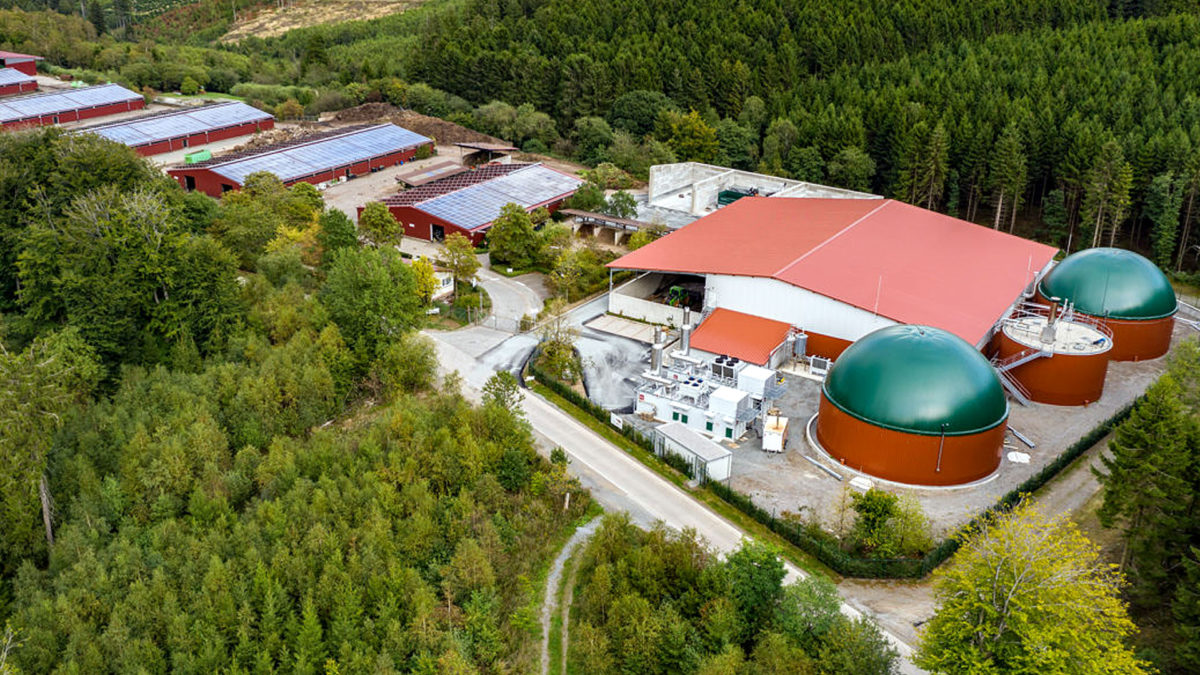Hybridizing anaerobic digestion with photovoltaic-thermal energy
Hybridizing anaerobic digestion with photovoltaic-thermal energy ... pv magazine International


Scientists Propose Hybridization of Anaerobic Digestion and Photovoltaic-Thermal Energy

December 4, 2023
By Lior Kahana
Researchers from the University of Valladolid and the Technical University of Madrid in Spain have proposed to hybridize biogas and biomethane production systems from cattle manure anaerobic digestion (AD) with photovoltaic-thermal (PVT) energy.
An anaerobic digestion plant is a power facility that can produce methane from manure.
The scientists explained that decentralized energy production systems provide opportunities for resource exploitation locally, together with energy self-sufficiency in remote communities. They believe that using solar panels for both electricity and heat in the anaerobic digestion of organic wastes might be suitable for isolated areas where energy connectivity is limited.
The PVT System
The PVT system conceived by the group is connected to a combiner box with batteries, and it is used to operate the digester, pumps, mixers, and the biogas upgrading unit. The latter is used for producing biomethane and is turned off during periods of low irradiation levels.
The thermal energy collected by the panels is utilized to increase the temperature of the digester until optimal conditions of 35°C are reached. The heat is then transferred by a network of tubes, allowing hot fluid from solar panels and cold fluid from within the anaerobic digester to circulate.
Analysis of the Production System
To analyze the novel decentralized production system, scientists have assumed it operates in a medium-sized pig farm with 2,000 heads, using their manure. According to the scientists’ calculations, such an operation will have a daily electric consumption of 38.3 kWh. The upgrading unit will demand 0.125 kWh/m3 biogas.
Assessment of Different Locations
Using a set of equations, the research group has assessed the production of the set-up under varied climatic conditions in five global locations: Soria (Spain), Iowa (United States), Odense (Denmark), Santa Catarina (Brazil), and Laixi (China). Their irradiation values and ambient air temperatures were obtained from the Solargis software.
The analysis showed that Odense had the lowest irradiance and was the only place where the system was unable to meet the necessary electricity demand. In the rest of the locations, only a part of the production, in greater or lesser quantity, would be used to maintain the temperature of the digester, but in any case, ensuring its operability and the biomethane generation throughout the year.
The annual volumes of biomethane were at values between 14,107 m3 for Odense and 29,607 m3 for Santa Catarina. The annual production in Soria, Iowa, and Laixi is similar, averaging 25,000 m3. Concerning the use of biomethane in those areas, the yearly biomethane savings were up to 65%.
Economic Analysis
An economic analysis of the levelized cost of electricity (LCOE) concerning 20 years of operation found an average value of $0.045/kWh for all five locations. The researchers stated that the PV/T hybrid solar technology proposed for enhancing the conventional anaerobic digester boasts a remarkably competitive LCOE value when compared to other energy sector technologies.
This research aligns with the Sustainable Development Goals (SDGs) by promoting sustainable energy production and resource exploitation. It addresses the goal of affordable and clean energy (SDG 7) by providing a cost-effective solution for decentralized energy production in isolated areas. Additionally, it contributes to the goal of responsible consumption and production (SDG 12) by utilizing organic waste for energy generation.

Join us, as fellow seekers of change, on a transformative journey at https://sdgtalks.ai/welcome, where you can become a member and actively contribute to shaping a brighter future.







